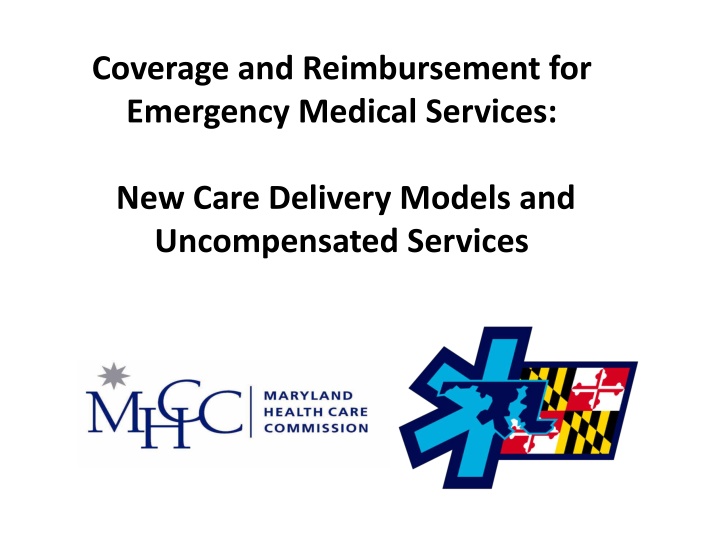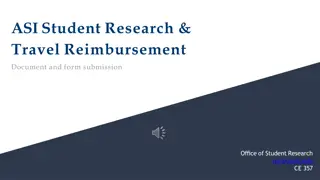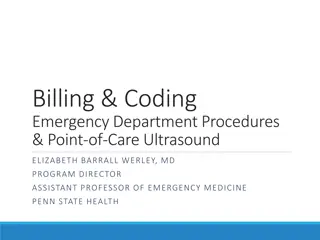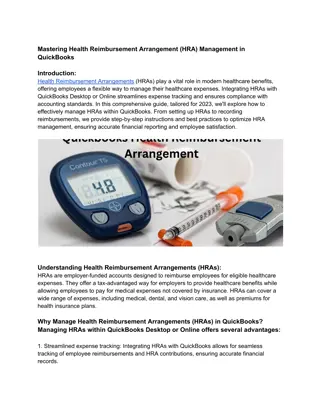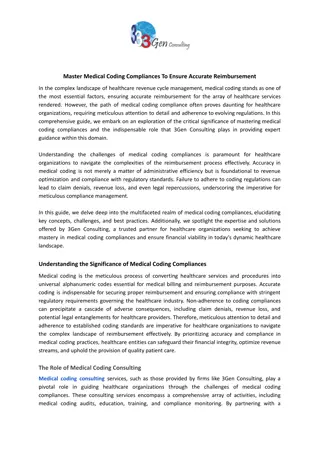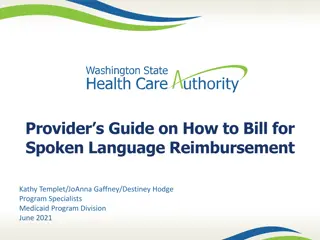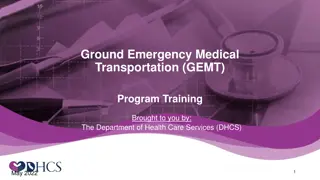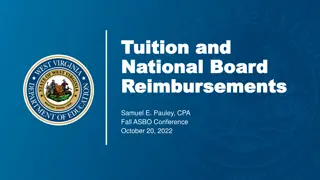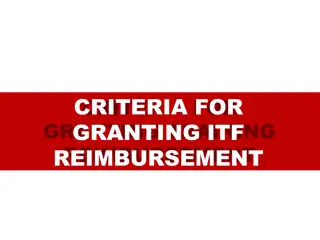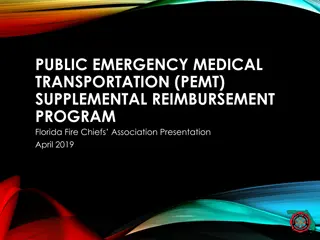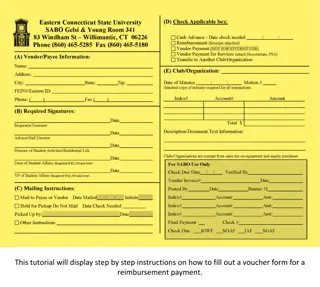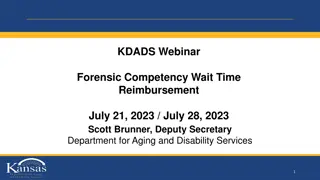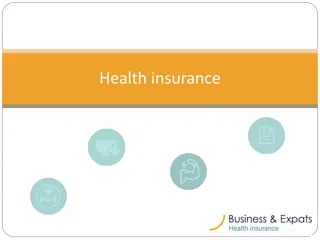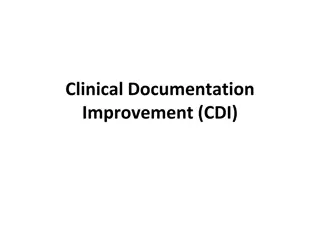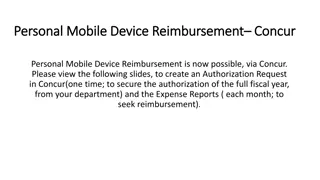Enhancing Reimbursement for Emergency Medical Services: SB 682 Focus
Explore the shift towards new models of Emergency Medical Services (EMS) care delivery under SB 682, aiming to address challenges such as ED overcrowding, long wait times, and reduced EMS capacity. The focus is on developing sustainable reimbursement strategies for innovative EMS models, including treating without transport, transporting to alternative destinations, and Mobile Integrated Healthcare programs, to align with broader healthcare initiatives.
Download Presentation

Please find below an Image/Link to download the presentation.
The content on the website is provided AS IS for your information and personal use only. It may not be sold, licensed, or shared on other websites without obtaining consent from the author.If you encounter any issues during the download, it is possible that the publisher has removed the file from their server.
You are allowed to download the files provided on this website for personal or commercial use, subject to the condition that they are used lawfully. All files are the property of their respective owners.
The content on the website is provided AS IS for your information and personal use only. It may not be sold, licensed, or shared on other websites without obtaining consent from the author.
E N D
Presentation Transcript
Coverage and Reimbursement for Emergency Medical Services: New Care Delivery Models and Uncompensated Services
Overview EMS New Models of Care SB 682 Deliverables & Work Plan Medicaid Work Plan Early Analysis Medicare Process Grants Private Insurance Additional Considerations Working Concepts & Summary Next Steps
SB 682 Focus on EMS Care Delivery Models Definitions: EMS Treat with No Transport 9-1-1 Patient Accepts EMS Care but declines transport to hospital ED EMS Transport to an Alternative Destination EMS transports 9-1-1 patient to an urgent care clinic or similar care environment instead of hospital ED Mobile Integrated Healthcare Along with other health care and social service providers, EMS provides non-emergent medical care and referrals to other health care / social service providers for frequent 9-1-1 callers or individuals at risk for over-utilization of the 9-1-1 system or hospital system.
SB 682 Why focus on new EMS models? Currently EMS is reimbursed only when 9-1-1 patient is transported to an ED. Reimbursement is for the transportation service. New models of EMS care are not currently reimbursed. New models of EMS care need reimbursement to be sustainable long-term.
SB 682 Why focus on new EMS models? ED Overcrowding Ambulances diverted to different EDs Long EMS off-load times at hospital EDs Long ED Patient wait times Decreased availability of EMS ambulances Diminished EMS capacity to respond to 9-1-1 Not all 9-1-1 patients need to be treated in ED ED is high cost environment/Reduce ED expenditures Reduce hospital re-admissions Better align EMS with larger Maryland health care initiatives (e.g., TCOC)
SB 682: Required Deliverables Develop plan for Medicaid reimbursement for three new models-1) EMS treat with no transport; 2) EMS transport to alternative destinations; and 3) MIH Programs Identify process for Medicare reimbursement for three new models Study and make recommendations regarding desirability & feasibility of EMS reimbursement for three new models when provided to enrollees of health insurers, nonprofit health service plans & HMOs
Work Plan Explore options for Medicaid and Medicare reimbursement with State Agency partners MHCC, MIEMSS, MDH, HSCRC, MIA MHCC & MIEMSS individual meetings & discussions with private market insurers and representatives and other stakeholders Workgroup meetings with all stakeholders: This is 2nd of 3 planned meetings. Report Draft Review and Approval by State EMS Board and MHCC Commissioners in December.
Medicaid Overview Treat and Release: 3 Possible Approaches 1) Reimburse code A0998 -- Ambulance Response & Treatment No Transport 2) Increase reimbursement for current covered services to compensate for increased treat and release costs. 3) Reimbursement for individual services delivered on scene Alternative Destination
Medicaid Reimbursement: Treat with No Transport Approach 1 Reimburse for Billing code A0998 -- Ambulance Response & Treatment No Transport Currently not Medicaid reimbursed If reimbursed, would likely be on a flat fee basis, similar to recent Medicaid changes to EMS reimbursement in GA & PA Carve-out or MCO paid? Budgetary impact unknown at present EMS would need to collect insurance information at scene
Medicaid Reimbursement: Treat with No Transport Approach 2 Continue to reimburse for transport to ED only, but increase existing payment of $100 to cover unreimbursed costs to EMS for Treat with No Transport Patients Budgetary impact unknown at present Easier to implement than other options: no need to change insurance info collection, no change to IT systems Impact on State fee-for-service Medicaid, not MCOs This is Medicaid s preferred approach
Medicaid Reimbursement: Treat with No Transport Approach 3 Medicaid reimbursement for specific EMS- provided services. Would require: Identification of specific EMS treatments, services, medications, etc., to be covered Development of payment rates Modification of State Plan CMS approval Develop regulations & modify MCO contracts Possible changes to EMS processes
Medicaid Reimbursement: Transport to Alternative Care Destination Payment for transportation to alternative destination only (e.g. flat fee-for-service payment for EMS), with new billing code Transportation payment carved-out from Managed Care (as now) MCOs would cover care costs at alternative destinations MIEMSS would set criteria and approve urgent care centers and/or Behavior Health facilities to receive ambulance transported patients Medicaid & MCOs would enroll and credential urgent care providers; Medicaid would set network requirements for urgent care. Would require EMS and/or urgent care provider to determine if patient is 1) enrolled in Medicaid; 2) an MCO member; and 3) urgent care center destination is within member s MCO network Savings to Medicaid not clear at present because of current non- emergent ED payment policy (EMTALA fee only)
Medicaid: MIH & Alternative Destination Medicaid reimbursement for MIH and alternative destination programs should be implemented in concert with an all-payer approach. Concerns about administration of program if only Medicaid participates as a payer: Can services be denied to people w/o coverage? Would risk of uncompensated care increase? Concerns about 3rd party liability and cost-shifting would services previously covered by 3rd party payers shift to Medicaid?
Medicare Options Use tools available under All-Payer and TCOC models to better align financial, quality & outcome incentives between EMS and hospitals oPopulation Health Improvement Grants oCare Redesign Programs oNew Model Programs Applies to all new models of care.
Medicare Options: Population Health Improvement grants HSCRC provides grants, funded through hospital rates, to hospitals for new initiatives HSCRC could make grants funds available to support new EMS care models Funding limited to availability of funds in rate setting system Grants are to hospitals; EMS must partner with hospital to apply. Grants awarded on a competitive basis subject to HSCRC approval HSCRC grants currently fund West Baltimore Paramedicine Program ($2 million)
Medicare Options Care Redesign Program (CRP) CRP is an element of TCOC agreement with CMS CRP requires hospital conveners to lead projects CRP is focused on Medicare savings HSCRC can create new care redesign tracks or modify existing tracks each year, with CMS approval Hospitals may participate in multiple tracks; hospital participation is voluntary. CRP track design takes time; population health grants provide potential funding bridge
Medicare Options New Model Programs New Model Programs is an element of TCOC agreement with CMS New Model programs do not require hospital conveners Conveners must take downside risk for total per capita spending and Medicare spending for attributed population. Developing new model program tracks takes time: no tracks expected until 2021. HSCRC is not recommending this the New Model Care approach for EMS care models at this time because EMS is unlikely to have sufficient control over patient outcomes to be fairly held accountable for demonstrating savings & performance on TCOC
Medicare Options Care Redesign & New Model Programs Care Redesign and/or New Model options for EMS would be developed through State Innovation Group and State Visioning Group process, just like other innovative delivery models under TCOC.
Private Market Insurance: Current Participation Treat and Release (code A0998) - 2015/2016 claims show 100 paid claims a year (3 insurers) Alternative Destination & MIH- current grant funding from payers for some pilots
Private Market Insurance Concerns about Legislative Mandates Legislative mandates are incomplete solutions, applying only to fully-insured large group and ACA- grandfathered small group and individual plans. The state does not have regulatory authority over large group self-insured plans (FEHBP, Marriot, etc.) Legislative mandates raise premiums for everyone It is not clear what the cost of these programs would be. Politically challenging
Private Market Insurance: Next Steps Continue to collect data on impact from pilot programs, with a focus on evaluating ROI for the health system as a whole. Continue to work to understand what is reimbursable under current insurance plans and maximize reimbursement. This likely requires collecting insurance information at the scene. Work individually with private insurers to make a convincing business case for coverage of additional services and/or increased rates for covered services.
Additional considerations Urgent Care centers and other potential alternative destinations do not have EMTALA requirements they can decline to provide care. Coordination and communication with other delivery reform programs (ex. MDPCP) and existing care delivery systems (ex. Medicaid Managed Care) is important i.e. expanded use of HIT to share health data and ensure appropriate referrals.
Working Concepts New EMS models of care need long-term sustainable funding solutions to continue and to grow Reimbursement for new EMS care models must be financially and practically viable for all system participants, including payers Reimbursement for new EMS care models should be All Payer Preliminary data suggests new EMS care models will likely have a greater impact on Medicare and Medicaid rather than on private insurers EMS reimbursement changes must dovetail with Total Cost of Care initiatives Implementation of reimbursement for new EMS care models should occur over time to allow for systems adjustment, consideration of updated data & information, and integration of lessons learned
Summary All payers need the best data possible to quantify potential costs of new coverage and estimate ROI. Continued development of program evaluation data, including cost data, is crucial. Best solutions involve all payers and will require sufficient time to complete.
Next Steps MIEMSS and MHCC draft report based on feedback from today s meeting. MIEMSS and MHCC release draft report for review and comment. Next Meeting 11/26--discussion of draft report. Report will be further revised before 12/11 State EMS Board meeting and 12/20 MHCC Commissioners meeting. Goal: submission to legislature before 1/1/2018
